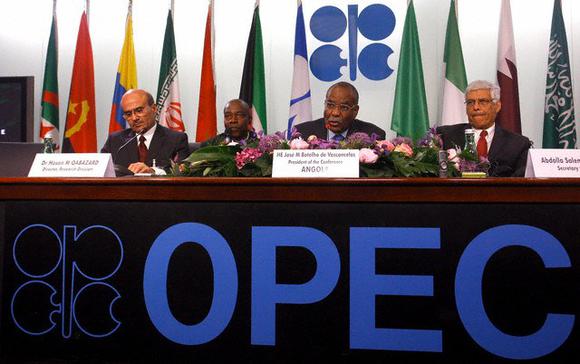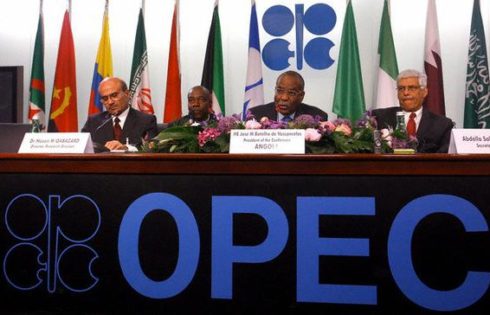
 Oil production from the Organisation of the Petroleum Exporting Countries (OPEC) rose to another record, hitting 33.54 million barrels per day (b/d) in October.
Oil production from the Organisation of the Petroleum Exporting Countries (OPEC) rose to another record, hitting 33.54 million barrels per day (b/d) in October.
The figure was significantly boosted by recoveries in Nigeria and Libya and more than offset field maintenance in Angola.
The gains, which total 300,000 b/d from September and marks the fifth consecutive month of increased production, further complicate the path for OPEC to freeze production between 32.5 million to 33 million b/d in order to support prices and accelerate the drawdown of inventories.
“OPEC’s freeze math has gotten more complicated as its countries keep pumping more,” said Herman Wang, senior writer for S&P Global Platts.
“With OPEC having self-imposed a November 30 deadline to finalise the freeze, the pressure will be on it to deliver a deal that the market views as credible. Progress towards that goal has been slow, and a fifth straight month of record high production won’t help.”
Nigeria and Libya are exempt from the freeze, according to the plan announced in Algiers five weeks ago, but increases in Iraq and the expected return of Angolan production once the Dalia field maintenance is complete will make it harder.
Meanwhile, Saudi Arabia, which is expected to bear the brunt of any cuts that the producer group implements, saw its output decline to 10.53 million b/d for October, with reduced crude consumption for power generation as the peak summer air conditioning season ended.
Nigeria, which resumed loadings of key export grades, Qua Iboe and Forcados, in late September, saw its production recover to 1.68 million b/d in October, as the exports of all of its key exports grades have resumed.
But the volatile Niger Delta remains unstable and sensitive, with chances of more militant attacks high, which means production is still at risk.
Forcados production, which only resumed a month ago, is expected to be affected this month after militants bombed the Trans-Forcados pipeline last Wednesday.
Libya’s production rose to an average of 530,000 b/d in October, as it continues to ramp up after exports from some if its eastern ports have resumed.
Libya’s output has more than doubled since August, as production recovered sharply following news in September that Libya’s state-owned National Oil Corporation (NOC) had lifted force majeure at the 360,000 b/d Es Sider terminal and also the 220,000 b/d Ras Lanuf and 70,000 b/d Zueitina terminals.
NOC chairman, Mustafa Sanalla, told S&P Global Platts that Libyan oil production was now 585,000 b/d, and also that the Es Sider terminal, which has been down since December 2014, was ready to begin loadings “within days.”
Production in fields operated by the Waha Oil Company, Harouge Oil Operations and Arabian Gulf Oil Company have also increased in the past few months.
Angola production declined to 1.47 million b/d, as the key Dalia field which produces around 200,000-250,000 b/d was down for maintenance the entire month. Output is expected to come back online this month.
Final details of OPEC’s freeze including individual country allocations and which production estimates are used to verify compliance are to be decided by the organisation’s next formal meeting, November 30, in Vienna.
OPEC ministers on September 28 agreed to a preliminary deal to freeze production between 32.5 million and 33 million b/d.
The organisation had been operating without any official output ceiling since December 4, 2015 when it scrapped the 30 million b/d ceiling that it had in place since January 2012.
OPEC will hold its next ministerial meeting on November 30 in Vienna, when details of the freeze agreement are supposed to be finalised.
Gabon officially rejoined OPEC on July 1 while Indonesia reactivated its membership at the December 2015 meeting.
The estimate for Iraq includes volumes from semi-autonomous Iraqi Kurdistan.
Iraq, the cartel’s second largest producer, had output of 4.56 million b/d in the month, on increased exports. Its oil exports in October were boosted by higher loadings from the southern terminals along with a rise in pipeline exports from the Turkish port of Ceyhan.
The country, which has disputed secondary source estimates – including from Platts used by OPEC to determine each country’s monthly output – invited several media organisations to Baghdad last month to detail its field-by-field production.
Iraqi oil officials have been adamant that Iraq will “not back down” and will continue to produce at current levels, regardless of whatever freeze agreement is reached. Its official production figure of 4.774 million b/d for September is higher than independent estimates, as it appears to be double-counting some production in the semi-autonomous Kurdistan Regional Government.
Iraqi officials have complained that the lower estimates could put the country at a disadvantage when OPEC decides the quotas under the freeze.
Iran’s production rose slightly in October to 3.67 million b/d, according to the Platts survey, as exports reached a post-sanctions high on increased interest from Europe on top of strong demand in Asia.
The country, which has also complained about secondary source estimates of its output being too low, has said it intends to regain its pre-sanctions production level of about four million b/d before it agrees to any freeze plan.
Analysts have, however, said Iran is unlikely to be able to raise its production much further without significant investment.
Weaker Dollar, Pipeline Attack In Nigeria Fuels Oil Prices Lift
Crude oil prices appreciated yesterday as a weaker U.S. dollar buoyed sentiment in the market, lifting prices from five-week lows.
Also, concerns over supply disruptions in Nigeria supported prices as militants in the Niger Delta oil hub attacked a pipeline operated by the Nigerian National Petroleum Corporation (NNPC) last Wednesday.
The Brent crude traded up 55 cents, or 1.2 percent, at $47.41 a barrel after touching a five-week low at $46.46 in the previous session.
U.S. West Texas Intermediate (WTI) crude was up 50 cents, or 1.1 percent, at $45.84 per barrel.
The U.S. dollar index slipped for a third session in a row yesterday and was down 0.09 percent on concerns over the outcome of next week’s U.S. presidential election, just as weak dollar makes dollar-denominated oil less costly for importing countries.
The weaker dollar provided the market with some reprieve even as crude prices fell to five-week lows in the previous session as U.S. crude oil stockpiles soared more than 14 million barrels last week, the largest weekly build since the U.S. Energy Information Administration started keeping records in 1982.
